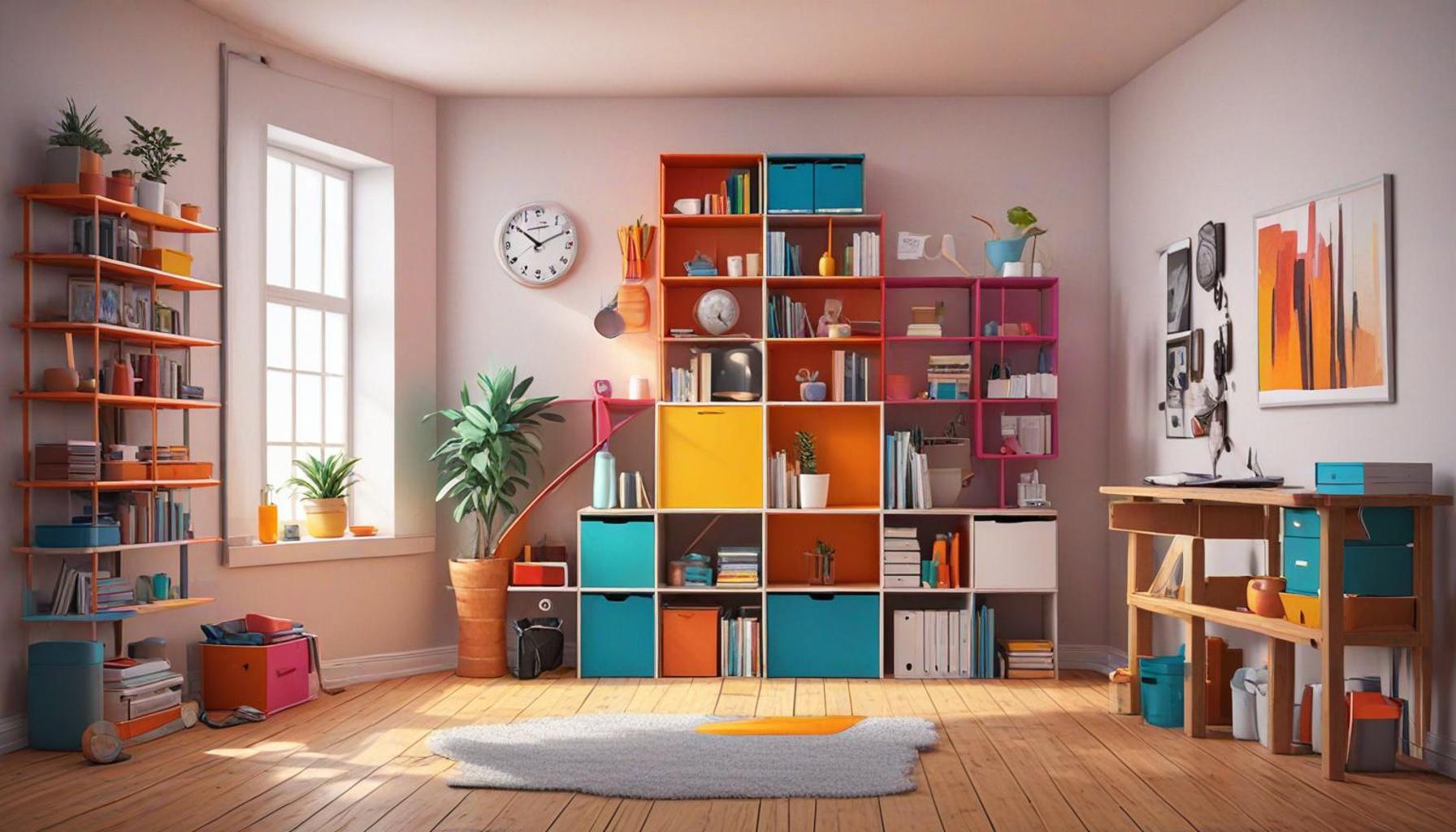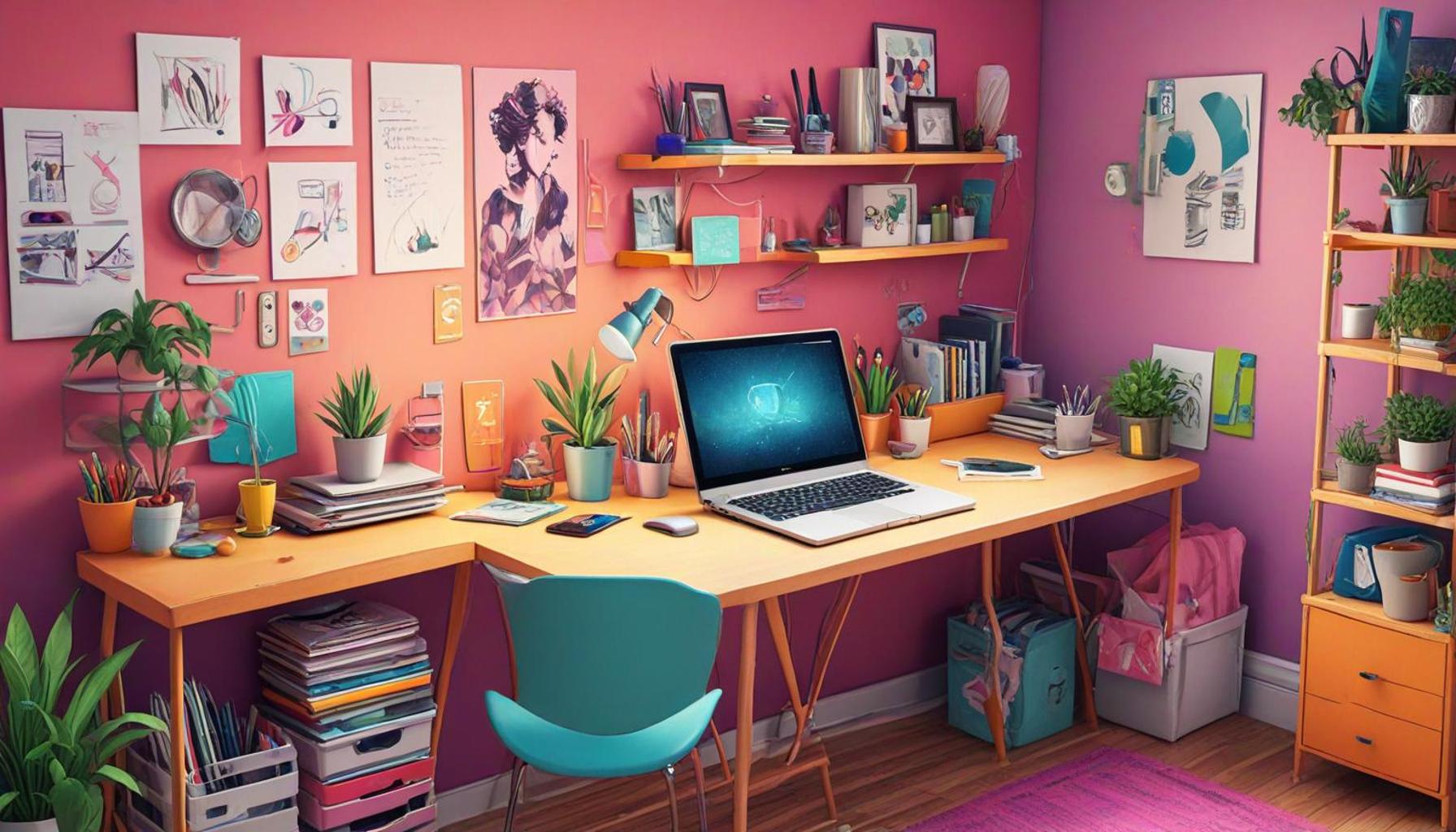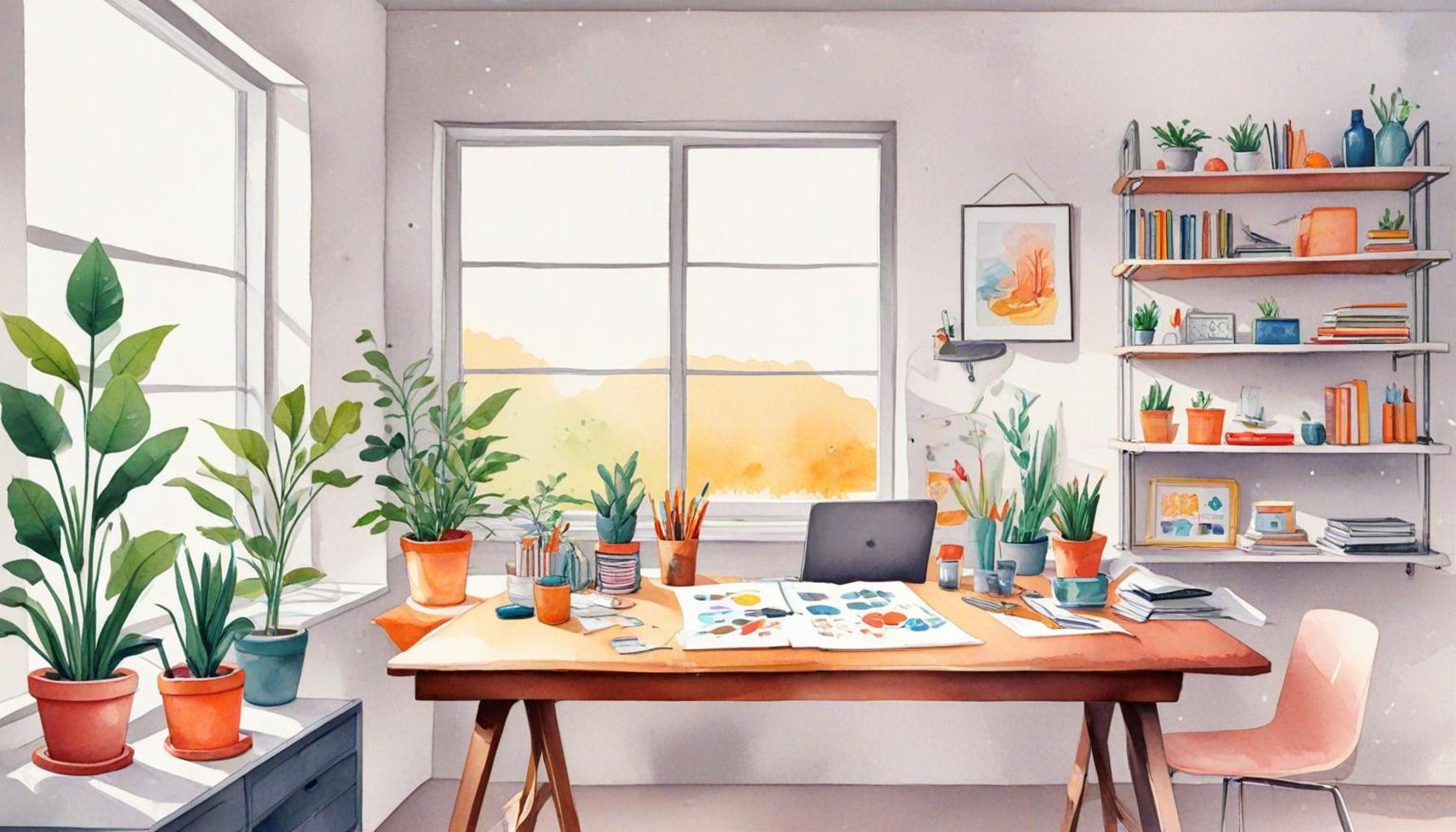Creating Efficient Workspaces at Home: Strategies for Minimalist Productivity
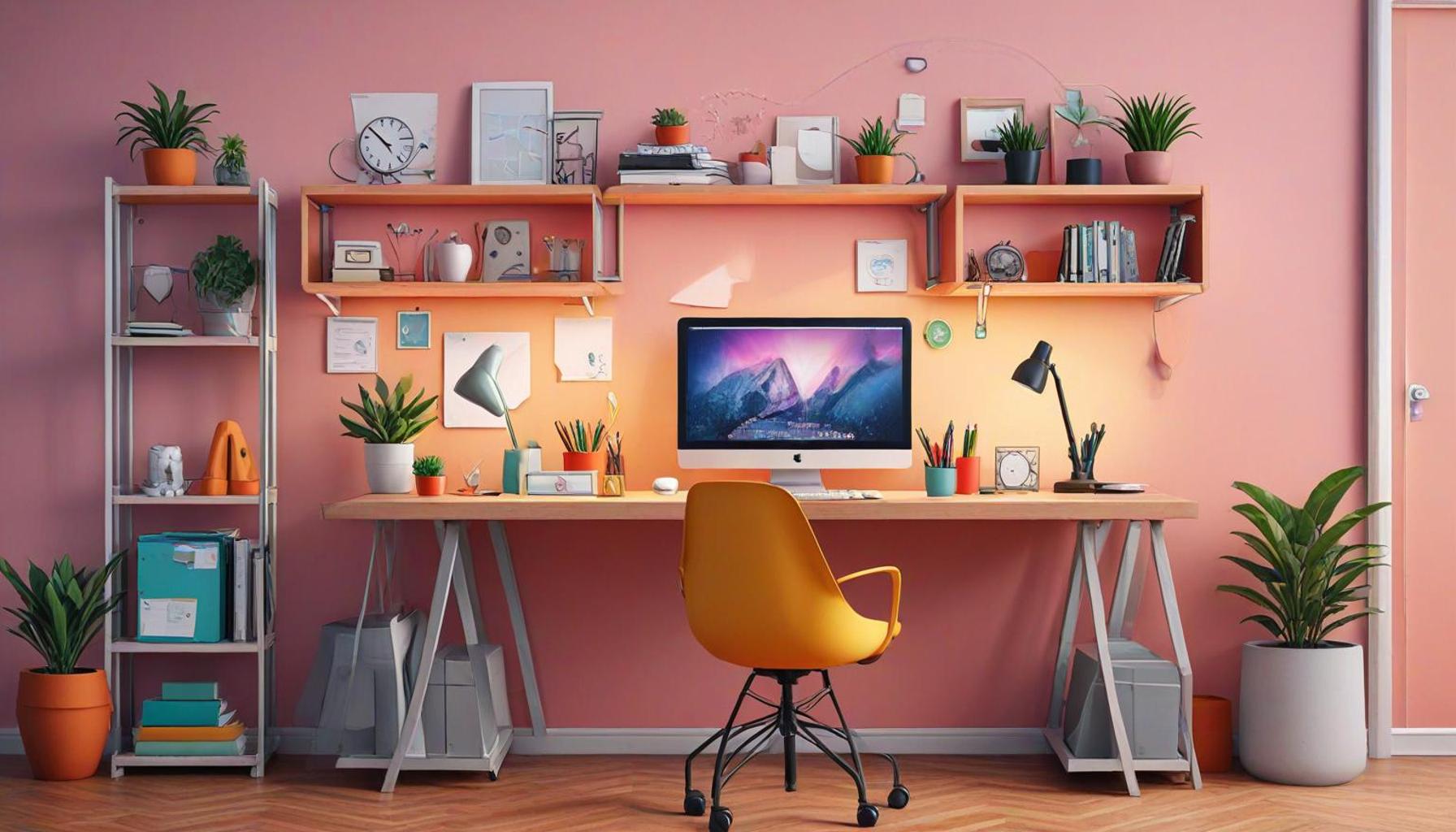
Unlocking Productivity in Your Home Office
As remote work continues to gain traction, the importance of an efficient workspace at home cannot be overstated. A thoughtfully designed home office plays a crucial role in enhancing your productivity by fostering an environment conducive to focus and creativity. Among the many design philosophies emerging, a minimalist approach has become particularly popular, advocating for simplicity and functionality in the workspace. The premise of minimalism is straightforward: less clutter leads to less distraction, allowing greater clarity of thought and improved work output.
Effective Strategies to Optimize Your Home Office
When aiming to create a workspace that maximizes productivity, certain strategies stand out and can be easily implemented. Here are some key approaches:
- Declutter Regularly: A clean space not only looks appealing but significantly influences your mental state. Take time each week to assess what items are essential and what can be removed. For instance, if your desk is littered with old bills, non-essential documents, or outdated office supplies, consider investing in a filing system or storage solutions like bins or shelves. This can create a clear and inviting environment, enabling you to concentrate on your tasks without distractions.
- Choose Multi-functional Furniture: Investing in furniture that serves multiple purposes can enhance the functionality of your workspace without overwhelming it. Desks with built-in storage or chairs that double as task seating and relaxation spots can be great choices. In particular, consider a foldable desk that can be collapsed when not in use, maintaining a sense of space and simplicity in your home setting.
- Incorporate Natural Light: Exposure to natural light can significantly boost mood and productivity levels. Strategically place your desk near a window to take advantage of sunlight. If your workspace lacks windows, adding mirrors can help reflect light and create a sense of openness. Additionally, investing in full-spectrum light bulbs can simulate daylight, providing an uplifting atmosphere, especially during the darker months.
Implementing these strategies can create a workspace that not only enhances aesthetics but also inspires productivity. A well-organized environment minimizes distractions, allowing for deeper concentration on the tasks at hand. Success in your home office isn’t merely about having the right tools; it’s about crafting a space that aligns with your workflow and minimizes interruptions.
Reflecting on Your Workspace Design
As you navigate the realm of minimalist productivity, take a moment to evaluate how each component of your workspace contributes to your overall workflow. Ask yourself questions like, “Is my desk setup ergonomic?” or “Does my decor genuinely inspire me?” The careful combination of intentional design and thoughtful organization can propel you toward greater achievements in today’s demanding work landscape.
Ultimately, a minimalist home office space serves as a blank canvas where creativity thrives and productivity flourishes, setting the stage for successful remote work in the United States and beyond.
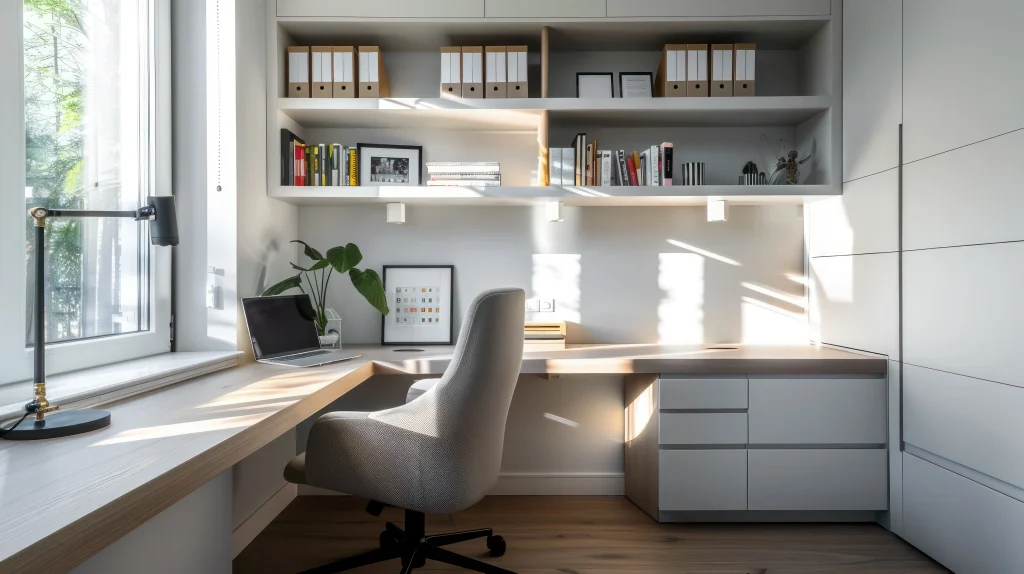
DISCOVER: Click here to learn how intentional design can elevate your life
Transforming Your Home Office into a Productivity Powerhouse
In the quest for enhancing productivity, it’s critical to recognize that the way your home office is set up significantly impacts your efficiency and motivation. By embracing a minimalist style, you can create an environment that reduces distractions and promotes focus. Minimalism in the workspace encourages intentionality in your choices, leading to a more functional and stress-free area for work.
Embrace the Fundamentals of Minimalist Design
To achieve a workspace that embodies minimalist productivity, consider the following essential strategies:
- Prioritize Essential Tools: Start by evaluating your work requirements. Identify the tools and equipment that are absolutely necessary for your daily tasks. For example, if you predominantly work on your computer, a high-quality monitor, comfortable keyboard, and a good chair may be your priority. Everything else can either be stored away or eliminated entirely. The less cluttered your space, the clearer your mind will become, allowing for greater creativity and problem-solving.
- Implement Strategic Zoning: Segmenting your workspace into distinct areas can help maintain focus and fluidity in your workflow. For instance, designate specific areas for computer work, brainstorming, and paperwork. This zoning allows your brain to switch gears more efficiently, enhancing your productivity. By physically dividing your workspace, you reinforce the mental separation necessary to tackle various tasks effectively.
- Opt for Calming Colors: Color psychology plays a crucial role in creating an atmosphere conducive to productivity. When painting or decorating your home office, consider hues like soft blues or greens that have been shown to increase focus and reduce stress. Avoid overly stimulating colors like bright reds, which may create chaos rather than calmness. Subtle tones create a serene environment that fosters deep concentration.
- Invest in Quality over Quantity: In minimalist design, the focus should be on high-quality items that serve multiple purposes. Choose a sleek desk with ample storage, or an ergonomic chair that supports your posture during long hours of work. This approach not only minimizes clutter but also builds a workspace that feels professional and pleasant.
By implementing these strategies, your home office can become a sanctuary of productivity rather than a pit of distractions. Consider how each decision you make regarding your workspace contributes to your overall focus and effectiveness. A minimalist office isn’t merely about having fewer items; it’s about creating a supportive environment that aligns with your professional needs.
Designing with Intention
As you explore the principles of minimalist design in your home office, reflect on how your space reflects your personal style and professional priorities. Consider asking yourself, “Is every item here contributing to my success?” or “Does my workspace inspire innovative thinking?” Evaluating your design with intention can lead to significant improvements in performance and well-being in your remote work setup.
In summary, the path to an efficient workspace at home lies in a thoughtful blend of functionality and aesthetics, making room for productivity to thrive within a simplified environment. Embracing minimalism opens the door to enhance your focus, creativity, and satisfaction in your work, leading to a fulfilling remote work experience.
Creating Efficient Workspaces at Home: Strategies for Minimalist Productivity
In an age where remote work is becoming increasingly prevalent, creating efficient workspaces at home is essential for maintaining productivity. Applying minimalist strategies can help streamline your workspace, reduce distractions, and enhance focus. Below are key strategies that can significantly impact your work environment and efficiency.
Declutter Regularly
The first step towards a minimalist workspace is decluttering. Regularly assess your workspace for items that are not essential to your daily tasks. A clutter-free desk not only improves physical organization but also fosters mental clarity. Consider implementing a one-in, one-out policy for new items to maintain a clean environment.
Prioritize Functionality
When designing your workspace, choose functional furniture that complements your work style. For instance, an adjustable standing desk allows for versatility and can help reduce fatigue. Select storage solutions that keep your work materials organized and easily accessible, thereby minimizing time spent searching for tools and documents.
Utilize Technology Wisely
In today’s digital age, leveraging technology is vital for a streamlined work process. Use applications and tools designed to enhance productivity, such as task managers and calendars. Setting reminders and creating to-do lists can assist in maintaining task focus and deadline adherence, significantly improving your overall efficiency.
Create a Dedicated Workspace
Establishing a dedicated workspace is crucial for differentiating work life from personal life. Designate a specific area in your home that is used solely for work, free from household distractions. By creating a clear boundary between your work and personal spaces, you will likely find it easier to concentrate and execute tasks efficiently.
To further explore these strategies and enhance your home workspace, the following table outlines the advantages of applying minimalist principles:
| Category | Advantages |
|---|---|
| Minimalism | Promotes mental clarity and focus. |
| Functionality | Ensures tools are accessible, saving time and streamlining tasks. |
| Dedicated Spaces | Helps in maintaining a work-life balance. |
By integrating these strategies into your home environment, you can create an efficient workspace that significantly boosts your productivity. Whether it’s reorganizing your desk or adopting digital tools, each step contributes to a more streamlined work experience.
DISCOVER MORE: Click here for tips on minimalist living
Maximizing Functionality through Smart Organization
Once you’ve embraced the fundamentals of minimalist design, the next step in enhancing your home office productivity is mastering organization. An organized workspace not only fosters efficiency but also instills a sense of calm that can improve focus and morale. Here are some effective organizational strategies to help you create a streamlined workspace that supports your productivity goals.
Declutter Regularly
Keeping your home office clutter-free is essential for a minimalist approach. A good rule of thumb is to practice the one-in-one-out policy. Whenever you bring a new item into your office, consider removing something else that serves no purpose in supporting your current workflow. Regularly schedule time—perhaps once a week or once a month—to assess your workspace for unnecessary items. This habit not only keeps your desk tidy but can also remind you of your workspace’s primary function: enhancing productivity.
Utilize Multi-Functional Storage Solutions
When it comes to storage, think beyond conventional file cabinets and drawers. The right storage solutions can help you maintain a minimalist aesthetic while still covering all your organizational needs. Consider investing in vertical storage, such as wall-mounted shelves or pegboards, which can free up desk space and keep frequently used items within arm’s reach. Use stylish bins or modular storage units that blend with your office’s decor, ensuring that every item has its designated place while maintaining a clean look.
Incorporate Technology Wisely
Integrating technology can significantly enhance your productivity while adhering to minimalist principles. Evaluate the digital tools that can replace physical documents. Cloud storage solutions like Google Drive or Dropbox allow you to keep your files organized and easily accessible without the need for paper. Use productivity apps like Trello or Asana to manage your tasks efficiently, empowering you to keep your desk free from lingering reminders and scattered notes. Remember that less physical paper leads to less clutter, converting your workspace into a streamlined hub of creativity.
Optimize Your Ergonomics
An often-overlooked aspect of workspace organization is ergonomics. A well-planned ergonomic setup not only promotes comfort but can also lead to enhanced productivity and wellbeing during extended work periods. Adjust your chair and desk height to ensure they fit your body comfortably, and position your computer screen at eye level to prevent strain. Incorporating a standing desk or a sit-stand converter can offer flexibility, allowing you to switch between sitting and standing to improve energy levels and focus.
Create a Distraction-Free Zone
In your pursuit of a minimalist workspace, it’s integral to recognize potential distractions that may lurk nearby. Establish a distraction-free zone by setting boundaries with family members or housemates regarding your work hours. Utilizing noise-canceling headphones or ambient sound machines can help you concentrate amidst potential disturbances. If possible, keep your workspace in a designated area of your home that is less frequented, thereby creating a physical separation that contributes to a more productive mindset.
By instituting these organizational practices within your minimalist workspace, you can elevate your efficiency and cultivate an atmosphere conducive to productivity. Remember, the goal is not simply to reduce clutter but to create a functional space that aligns with your professional objectives and inspires your creative growth.
DISCOVER MORE: Click here to learn about minimalist habits
Conclusion
In summary, creating efficient workspaces at home through minimalist productivity strategies is all about refining your environment to sustain focus and enhance performance. By integrating elements such as smart organization, regular decluttering, and ergonomic setups, you can transform your workspace into a hub of creativity and efficiency. The decision to adopt a minimalist approach not only declutters your physical surroundings but also clears mental space, allowing you to concentrate on tasks that truly matter.
As you design your workspace, consider the multi-functional storage solutions that not only maximize space but also maintain a sense of aesthetic simplicity. Technology plays a crucial role in this journey; embracing digital tools can minimize physical clutter while enhancing productivity. With the right apps and cloud services in your toolkit, managing tasks and information becomes more streamlined and accessible.
Finally, remember the importance of establishing a distraction-free zone that minimizes interruptions while you work, building a boundary between personal and professional life. Whether it’s reconfiguring your home layout or setting appropriate work hours with household members, these small changes can yield significant improvements in concentration and output.
Ultimately, the goal of crafting an efficient workspace at home is not just about reducing excess but about creating an environment that inspires clarity, creativity, and productivity. As you implement these strategies, take the opportunity to explore what resonates with you, fostering an atmosphere that aligns with both your work objectives and personal well-being.
